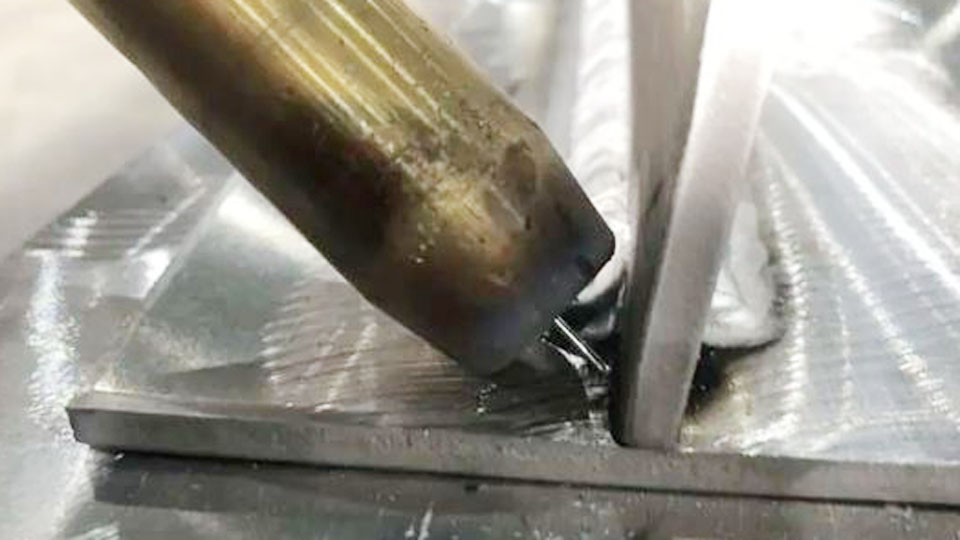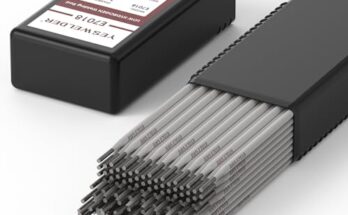Aluminum welding can be tricky, and if you’re like me, you might be wondering—can you MIG weld aluminum without gas? Maybe you don’t have access to shielding gas, or you’re just looking for a different way to get the job done. Whatever the reason, it’s an interesting question, and I’ve explored this topic deeply.

Image by weldingmastermind
The short answer? It’s not ideal, but it is possible. Aluminum is a highly reactive metal, and without shielding gas, welding it becomes much more difficult.
With the right approach, you can still join aluminum without using traditional gas-shielded MIG welding. Let’s break it down and explore your options.
Can You MIG Weld Aluminum Without Gas?
MIG welding aluminum normally requires shielding gas, usually 100% argon, to protect the weld from oxidation and contamination. But if you don’t want to use gas, your best option is flux-cored aluminum welding.
Most people associate flux-cored welding with steel, but aluminum flux-cored wire does exist. This type of wire has a built-in shielding agent that creates a protective slag over the weld, similar to stick welding.
However, using flux-cored wire for aluminum welding has some limitations:
- It’s harder to find and more expensive than traditional aluminum MIG wire.
- The weld quality may not be as clean or strong.
- You might get more spatter and a rougher bead appearance.
Even with these challenges, flux-cored aluminum welding can work for certain applications.
What You Need to MIG Weld Aluminum Without Gas
If you’re going to weld aluminum without shielding gas, you’ll need the right setup. Here’s what you should have:
| Equipment | Purpose |
|---|---|
| Flux-Cored Aluminum Wire | Contains shielding agents to protect the weld |
| Spool Gun (Optional) | Helps feed soft aluminum wire more smoothly |
| DC Electrode Positive (DCEP) Power Supply | Provides the right polarity for aluminum welding |
| Clean Work Surface | Aluminum must be free of dirt, grease, and oxidation |
If you don’t have access to flux-cored aluminum wire, you might need to consider other welding processes like TIG welding or stick welding, which can be done without shielding gas.
Setting Up Your Welder for Flux-Cored Aluminum Welding
Before you start welding, you need to make sure your welder is properly set up. Here’s what I recommend:
Use the Right Wire
Standard MIG wire (ER4043 or ER5356) won’t work without gas. You must use a flux-cored aluminum wire.
Adjust Your Welder Settings
Aluminum welding requires higher voltage and wire feed speed than steel. If your settings are too low, you won’t get proper penetration. Start with:
- Voltage: 18-24V
- Wire Speed: Higher than steel, around 250-500 IPM (inches per minute)
Choose the Right Polarity
Set your welder to DCEP (Direct Current Electrode Positive). This helps ensure better penetration and arc stability.
Clean the Aluminum Thoroughly
Aluminum oxidizes quickly, and the oxide layer has a higher melting point than the base metal. If you don’t remove it, you’ll struggle to get a proper weld.
- Use a stainless steel brush to remove oxidation.
- Wipe the surface with acetone to remove grease or dirt.
Use a Spool Gun (If Possible)
Aluminum wire is soft and can easily tangle in a regular MIG setup. A spool gun feeds the wire more smoothly, reducing bird-nesting and feeding issues.
Welding Techniques for Flux-Cored Aluminum
Welding aluminum without gas requires some technique adjustments. Here are my best tips to help you get a strong weld:
Use a Push Angle
Unlike steel, aluminum prefers a push technique. Hold your torch at a 10-15 degree push angle to direct the arc forward and improve penetration.
Control Your Travel Speed
Aluminum heats up quickly, and moving too slow can cause burn-through. Keep a steady, moderate travel speed to avoid excessive heat buildup.
Watch for Slag Formation
Since flux-cored wire creates slag, you’ll need to chip it off after each pass. Be sure to clean between passes to prevent slag inclusions.
Use Multiple Passes for Thick Material
Aluminum conducts heat fast, so if you’re welding thicker materials, use multiple passes instead of trying to get full penetration in one go.
Common Problems and How to Fix Them
Welding aluminum without shielding gas isn’t easy, and you might run into some challenges. Here’s how to fix them:
| Problem | Cause | Solution |
|---|---|---|
| Excessive Spatter | High wire speed, improper settings | Reduce wire speed, fine-tune voltage |
| Weak or Brittle Welds | Contamination, low penetration | Clean aluminum thoroughly, increase heat input |
| Porosity | Moisture or oxidation | Dry and clean metal before welding |
| Wire Feeding Issues | Soft aluminum wire tangling | Use a spool gun or Teflon liner |
If you struggle with these issues, don’t get discouraged. Practice and proper setup make all the difference.
Alternative Methods for Welding Aluminum Without Gas
If flux-cored aluminum MIG welding isn’t working for you, here are some other options:
Stick Welding Aluminum
Yes, you can stick weld aluminum using specialized aluminum electrodes. The flux coating protects the weld, just like in flux-cored wire. However, stick welding aluminum is very difficult and not recommended for beginners.
Brazing Aluminum
If you’re working on thin aluminum, brazing might be a good alternative. Brazing uses a filler rod and heat source (like a propane torch) to bond aluminum without melting it. It’s not as strong as welding, but it works for light-duty applications.
TIG Welding Without Gas (Not Recommended)
TIG welding normally requires shielding gas, but some people try to TIG weld aluminum without gas using flux-coated electrodes. This is not ideal and produces lower-quality welds compared to traditional argon-shielded TIG welding.
When Should You Avoid Welding Aluminum Without Gas?
While it’s possible to weld aluminum without shielding gas, it’s not always a good idea. Avoid gasless welding if:
- You need high-strength welds for structural applications.
- A clean, polished finish is required (flux-cored welds are rough).
- You’re working with thin aluminum, as flux-cored welding can be too hot.
If you need professional-quality aluminum welds, traditional MIG or TIG welding with shielding gas is the best choice.
Conclusion
So, can you MIG weld aluminum without gas? Yes, but it requires flux-cored aluminum wire, the right welder settings, and careful technique. While this method works for certain projects, it has limitations.
If you want clean, strong, and professional welds, using shielding gas with MIG or TIG welding is still the best option. But if you’re in a pinch and can’t use gas, flux-cored welding can be a useful alternative.
I hope this guide helps you decide the best way to weld aluminum for your needs. If you’re just starting, take your time, practice, and experiment with different techniques. Happy welding!
FAQs
Can you use regular flux-cored wire to weld aluminum?
No, standard flux-cored wire is made for steel. You need flux-cored aluminum wire.
What is the best wire for welding aluminum without gas?
Look for flux-cored aluminum wire, although it can be hard to find.
Is gasless aluminum MIG welding strong?
It can be, but it’s generally weaker and less clean than gas-shielded MIG or TIG welding.
Why is my aluminum weld full of holes?
This is porosity, caused by contamination, oxidation, or moisture. Make sure your aluminum is clean and dry before welding.
Can you weld aluminum with a regular MIG welder?
Yes, but you need 100% argon gas or flux-cored aluminum wire to get good results.





